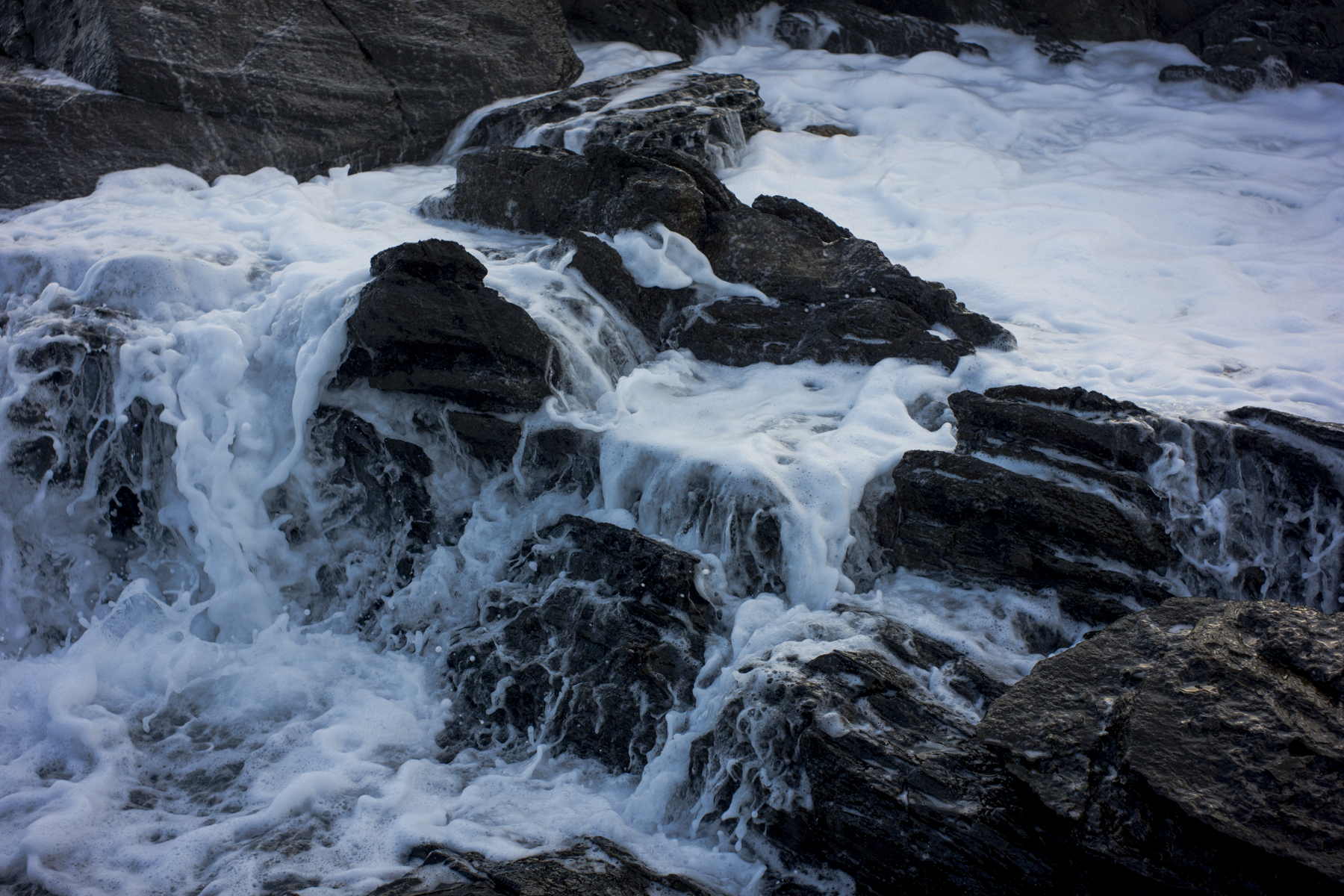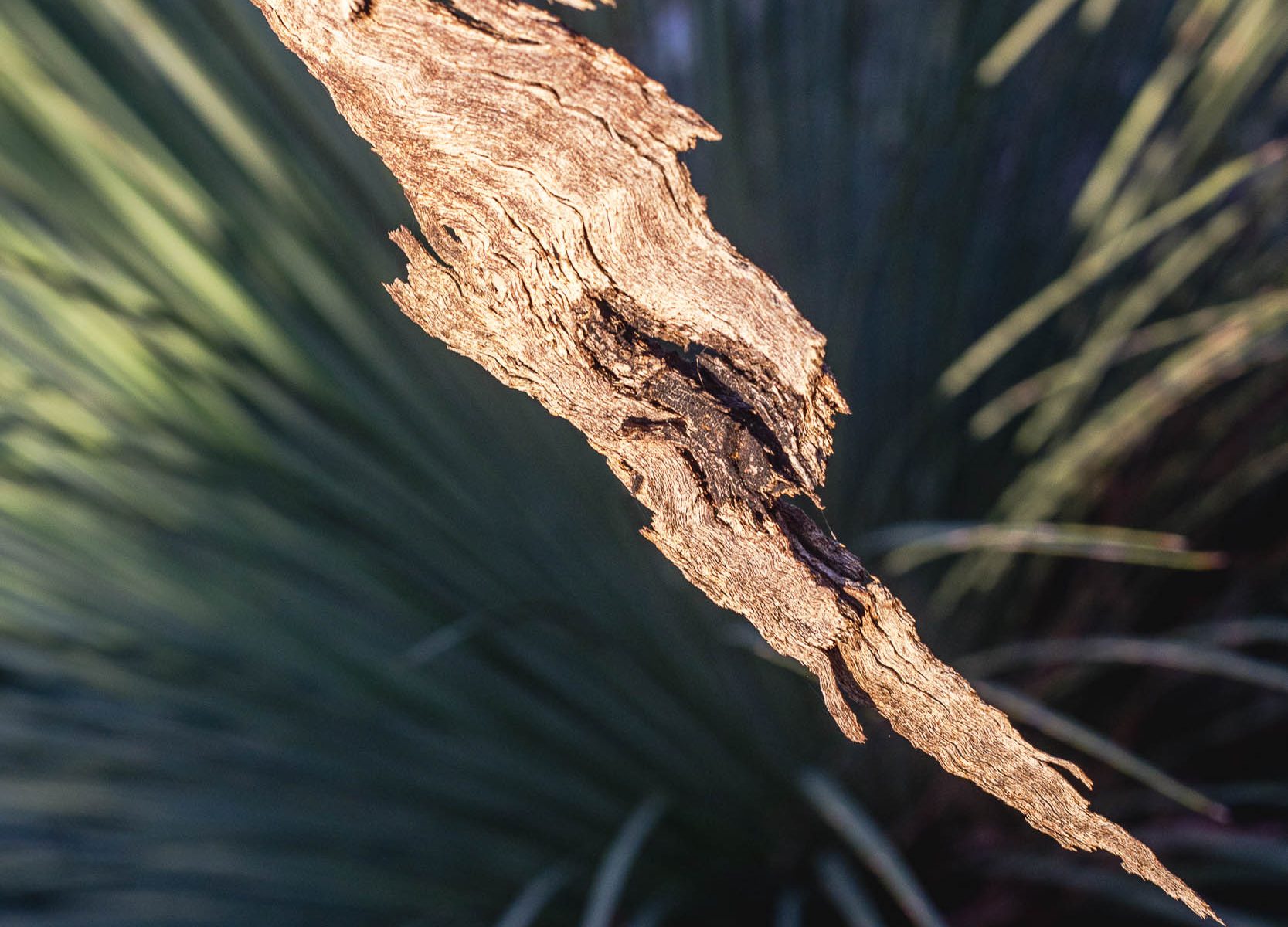In the winter of 2023 I started the bark series whilst on the early morning poodlewalks in the local Waitpinga bushland in Ngarrindjeri country, with Kayla our standard poodle. The series is designed around one camera (Leica M4-P), one lens (Leica Summicron-M 50mm f.2), one film (Kodak Portra 400) and it is centred on the ontology of the natural object in the present moment. The underpinning aesthetic field is an environmental one of the human body within the environment, of the ways that we always simultaneously shaping and being shaped by the physical natural environment.
The aesthetic engagement with everydayness is a drifting, walking art project within a small pocked of struggling bushland surrounded by agricultural land. It is premised on a meditative walking and seeing (of being in the ephemeral present) and on the photography being simple in its approach. The series on non-human wounded nature is underpinned by Japanese aesthetics, with its minimalist approach, complex and sophisticated categories, and the multiple, historical interpretations of these categories (eg., wabi-sabi).
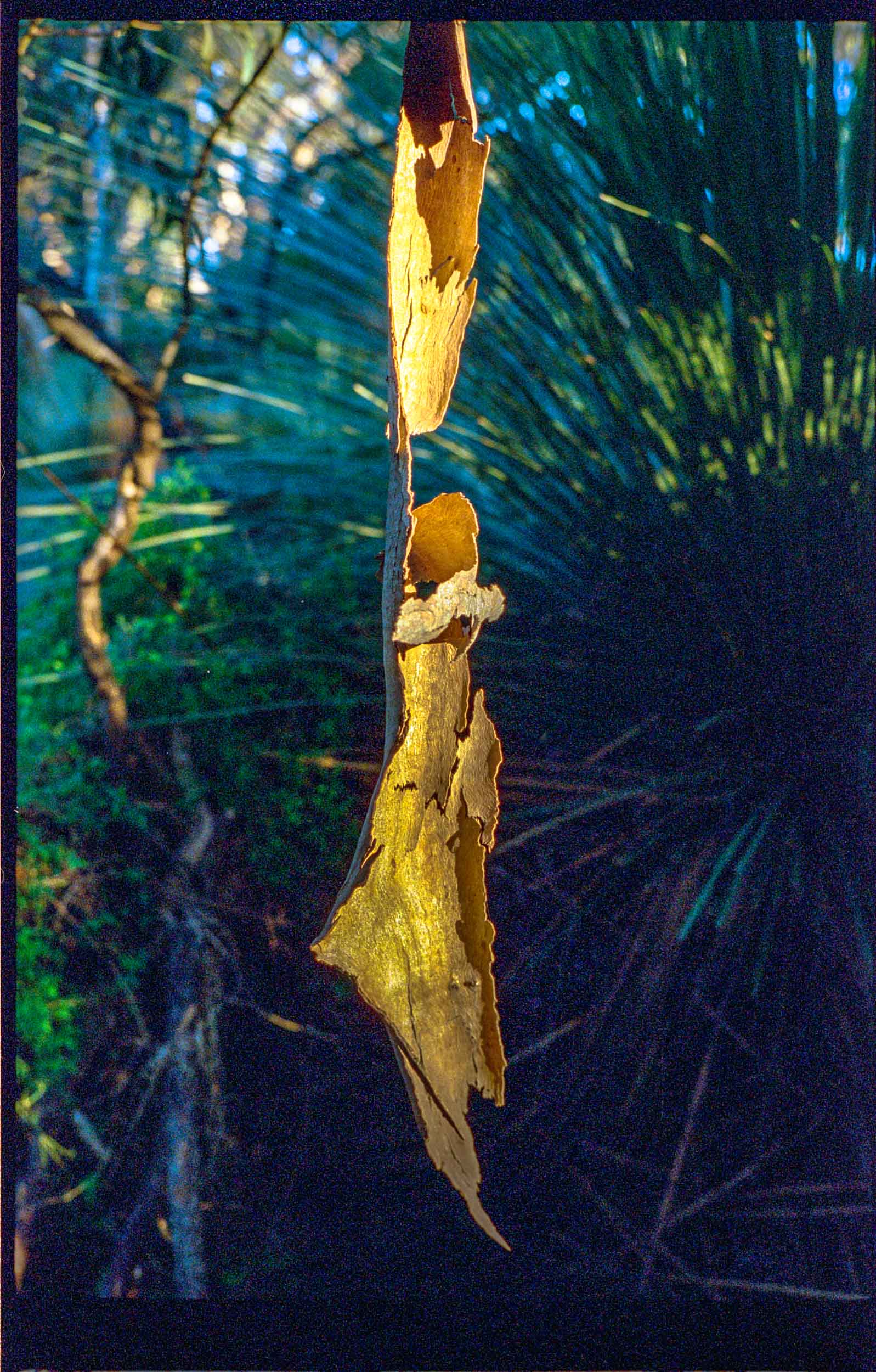
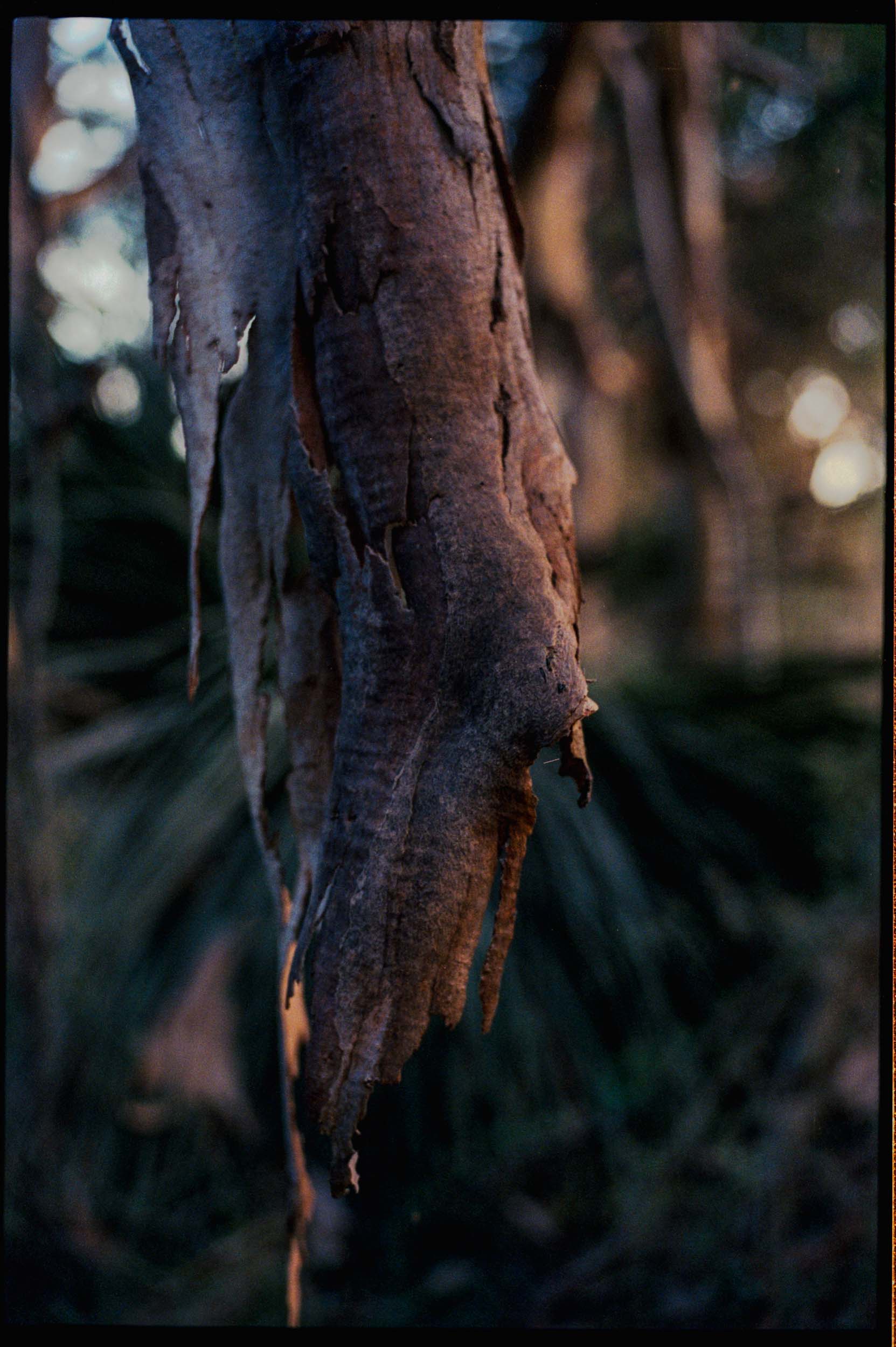
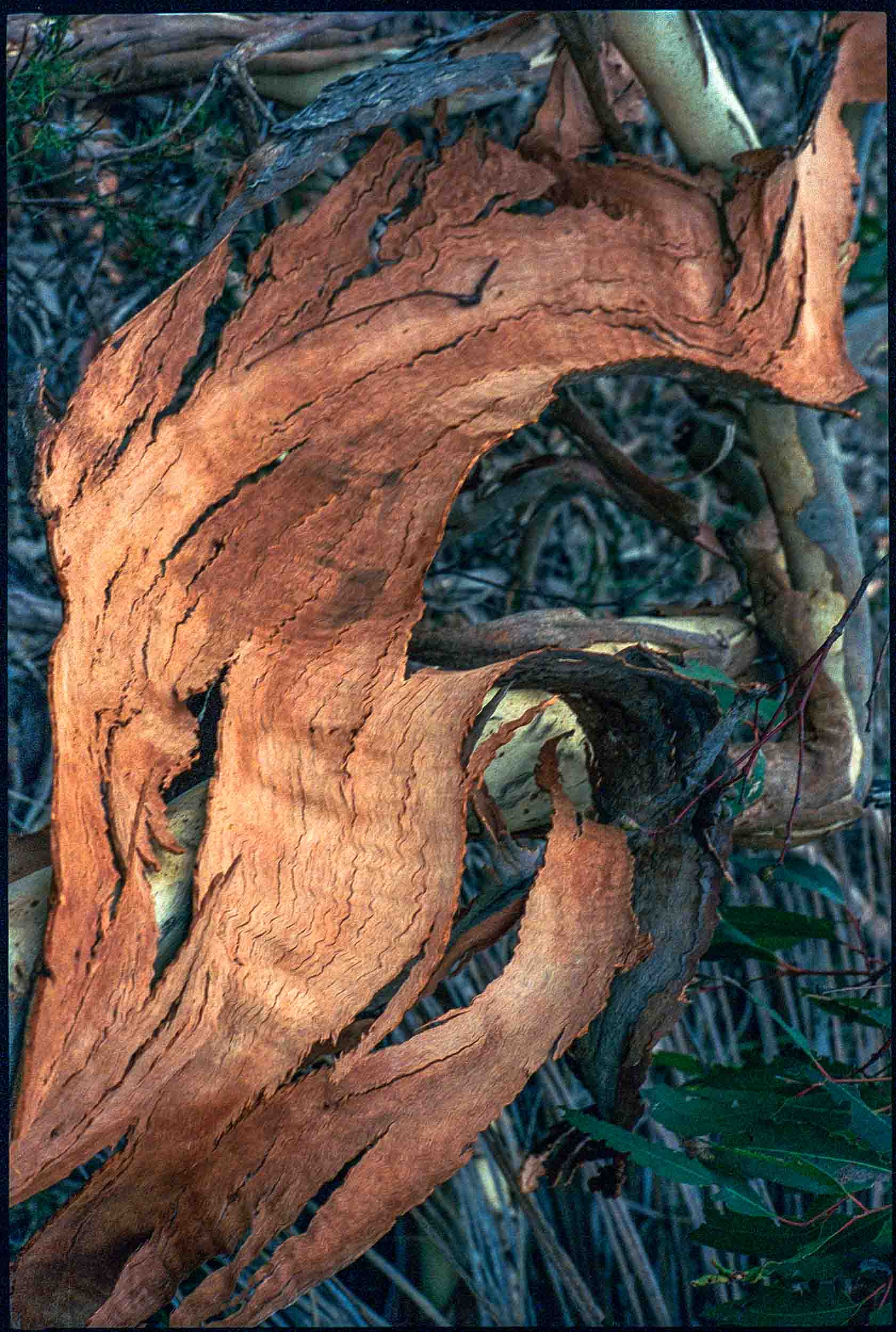
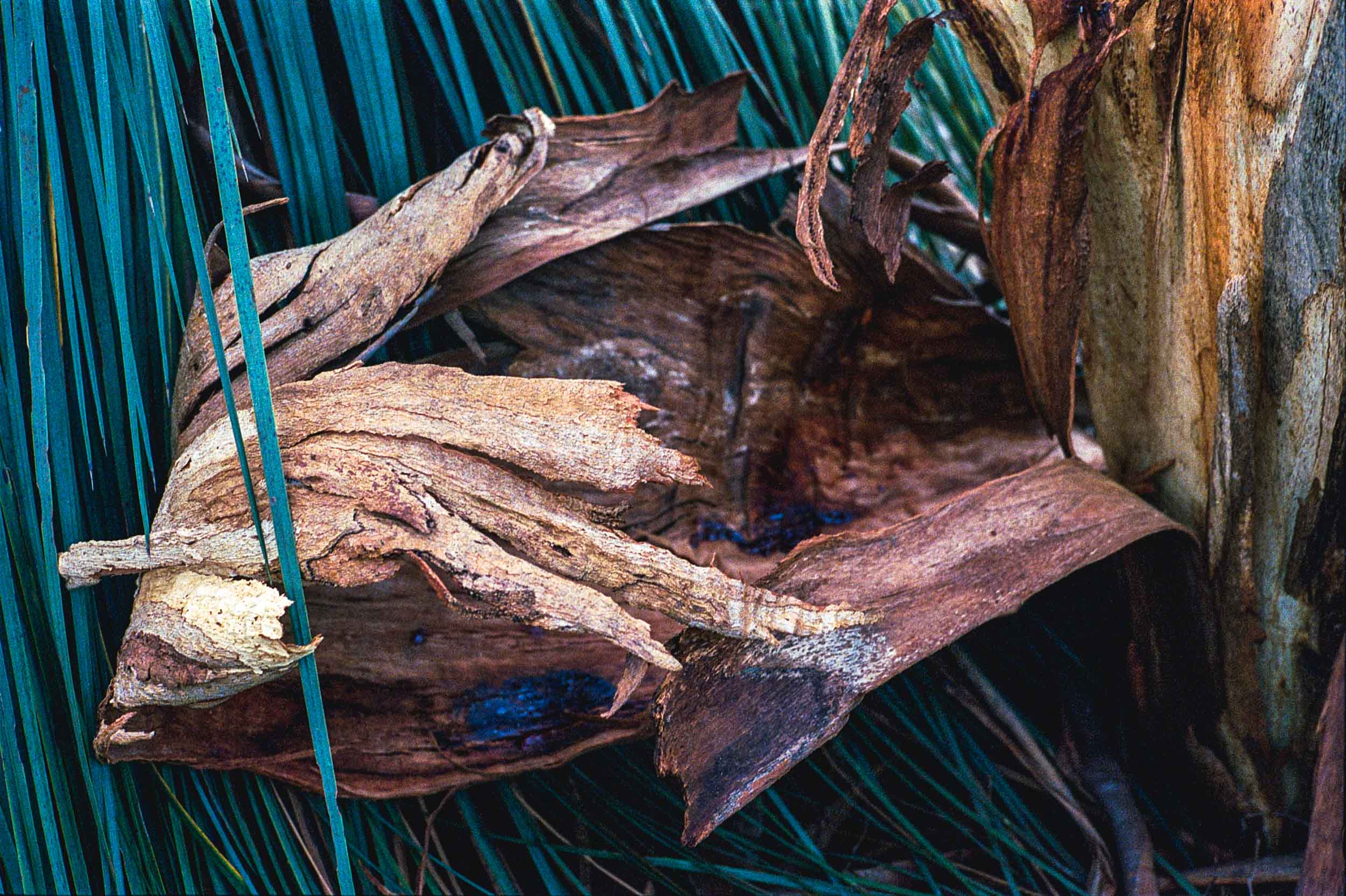
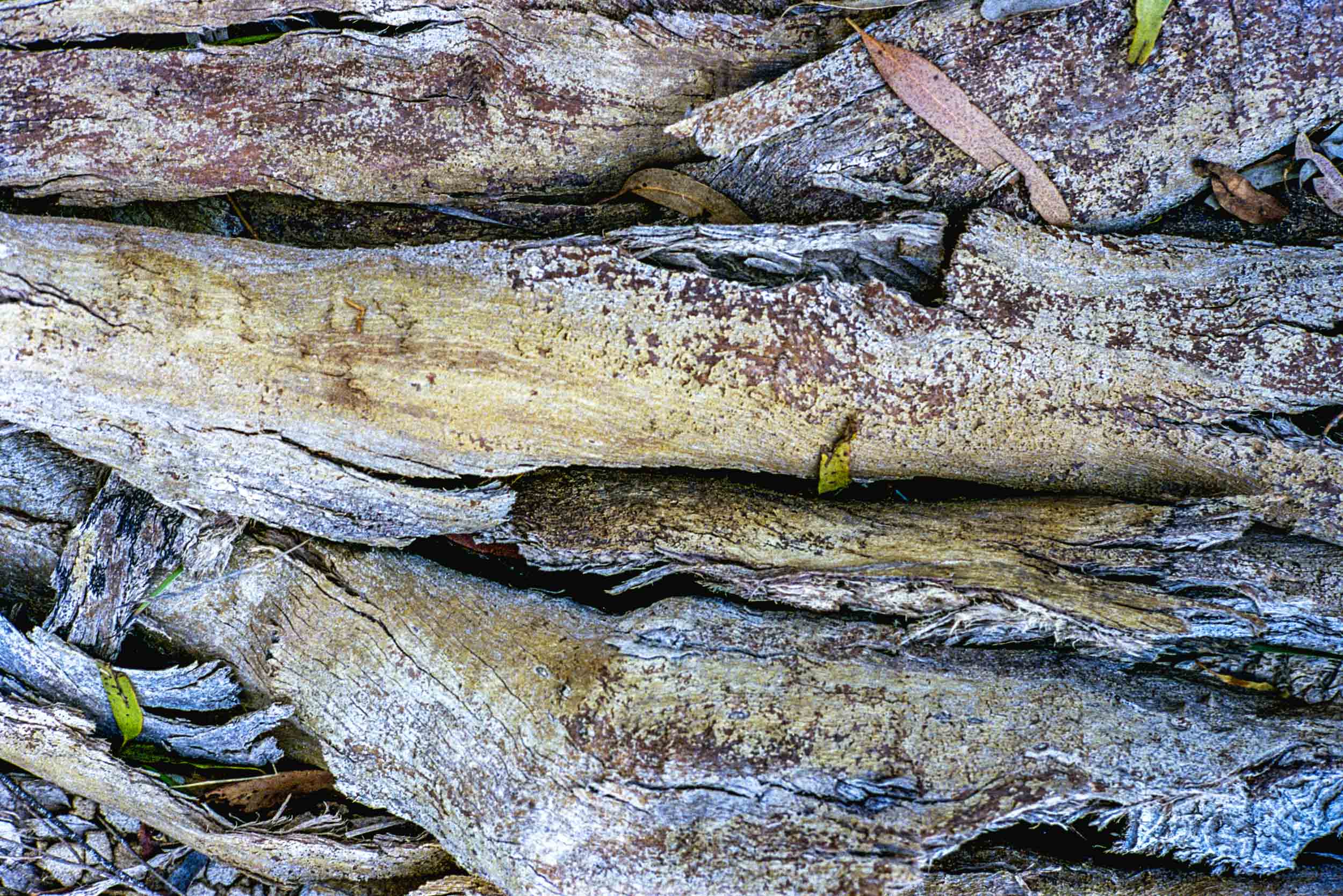
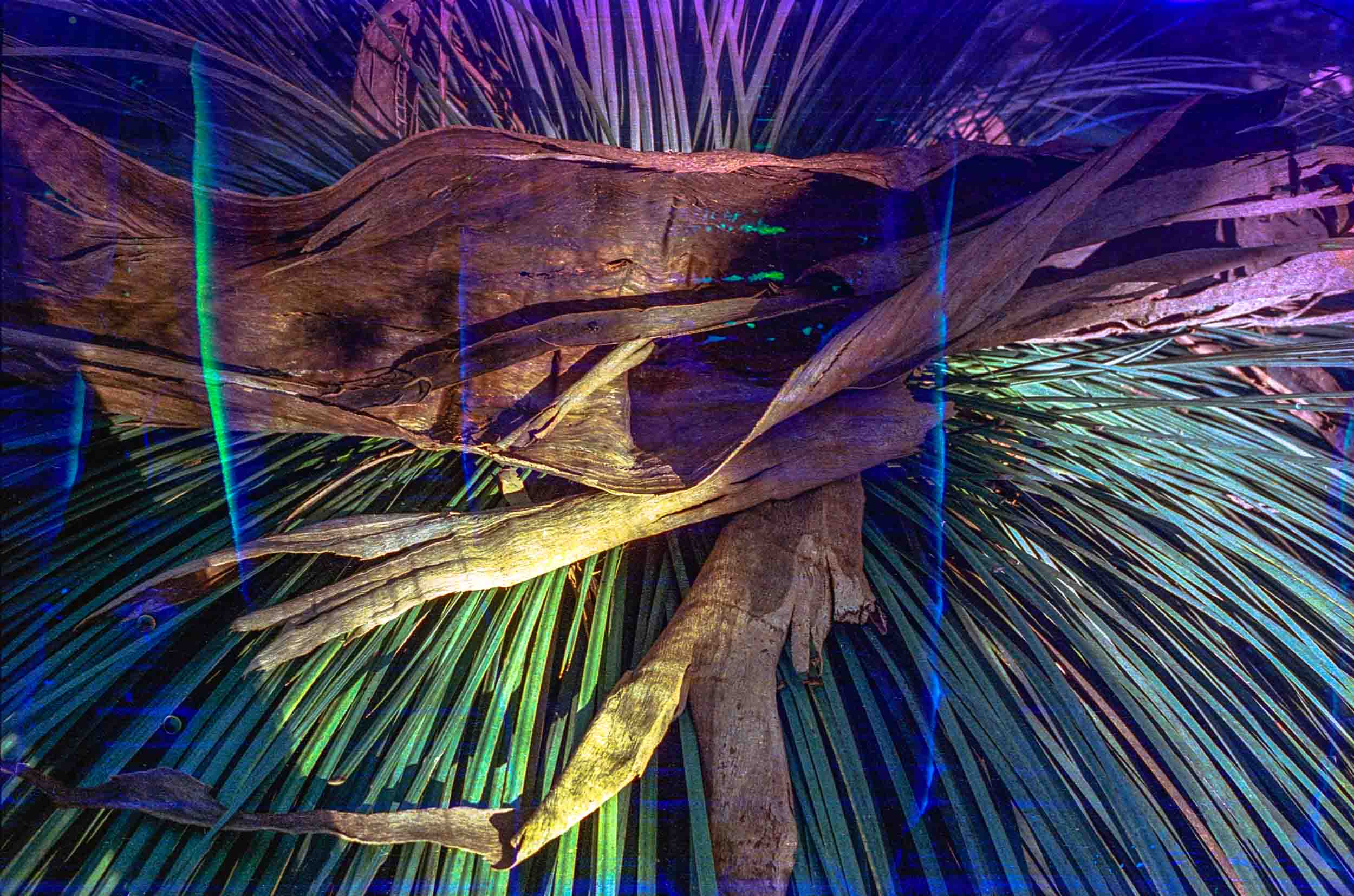
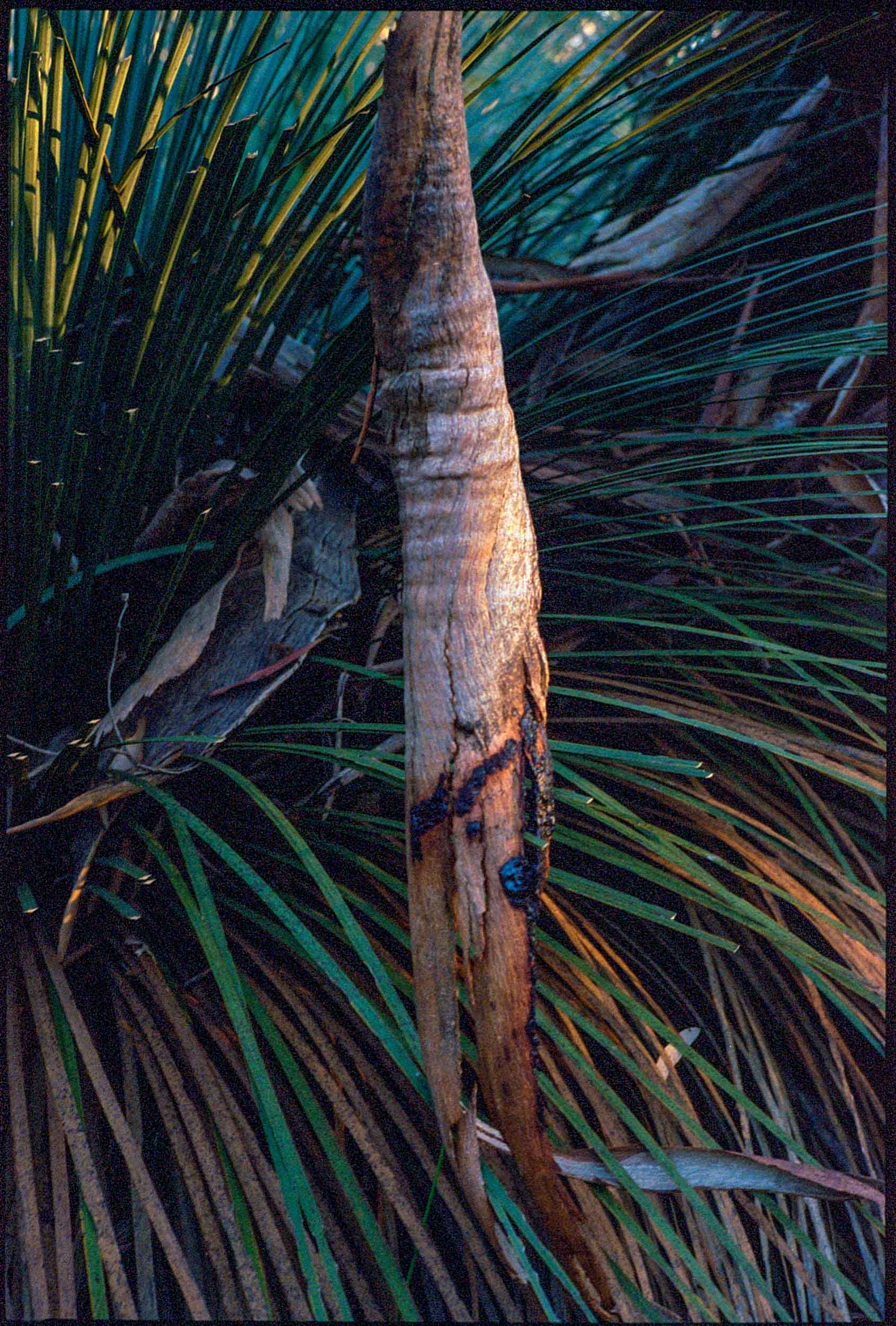
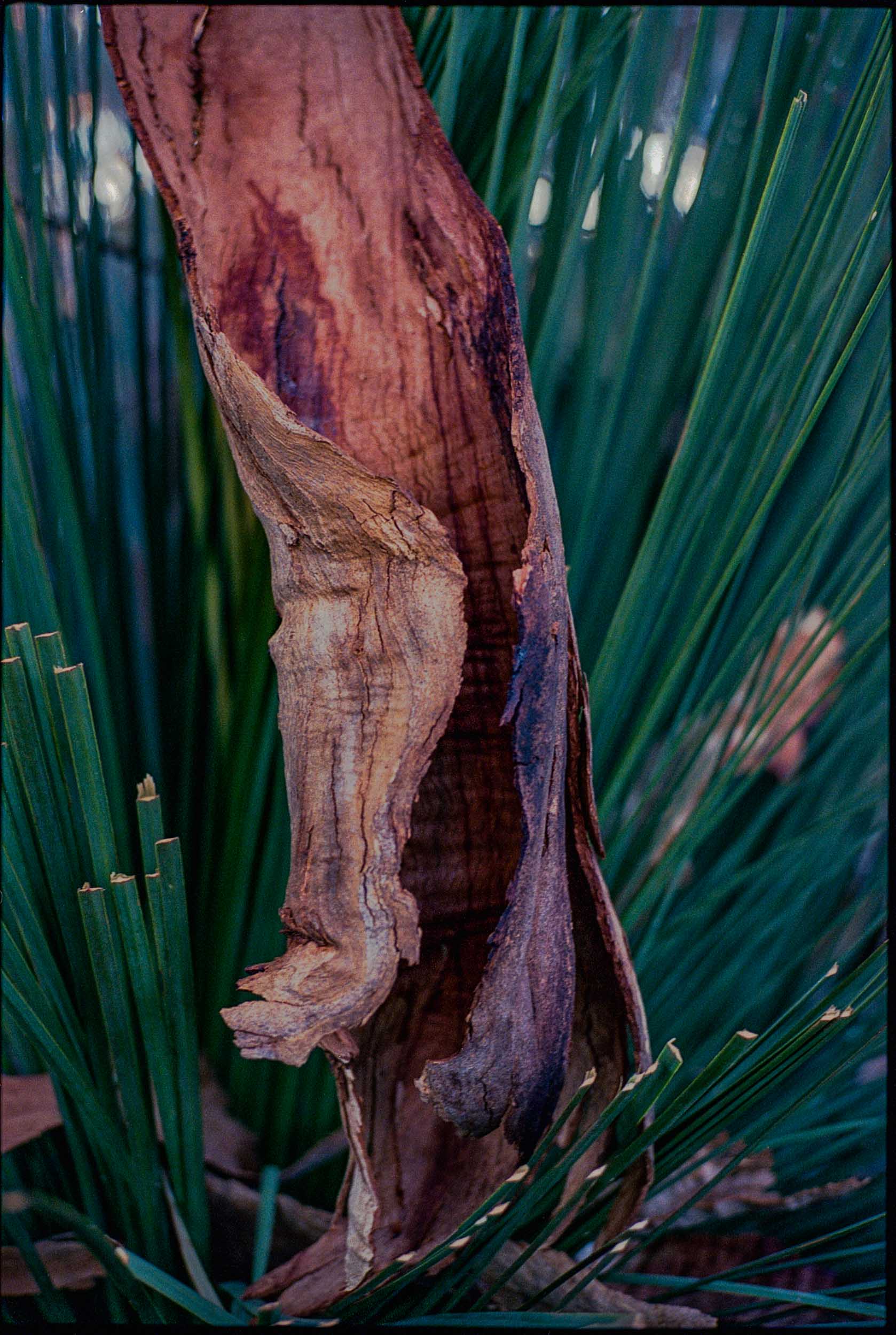
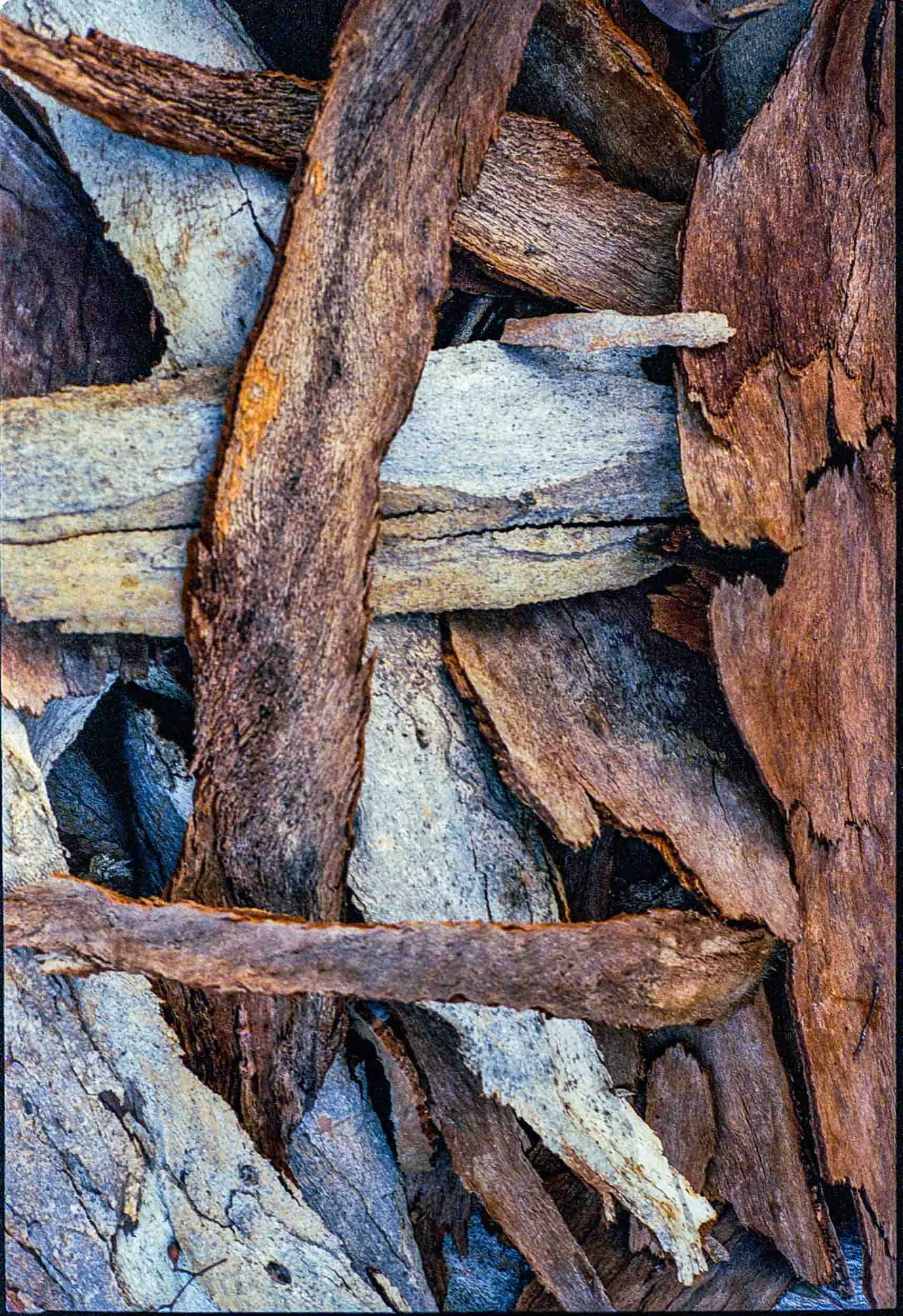
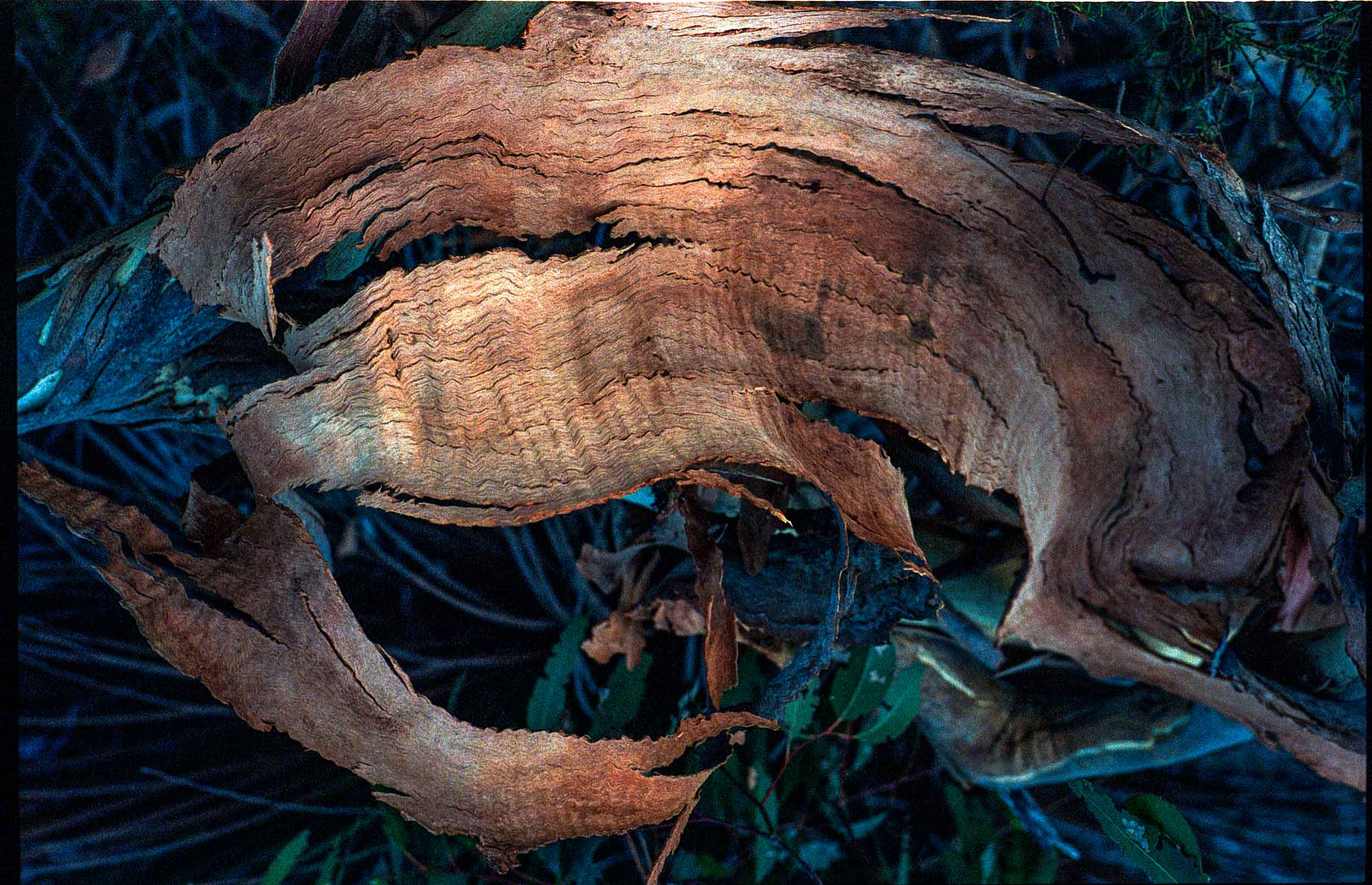
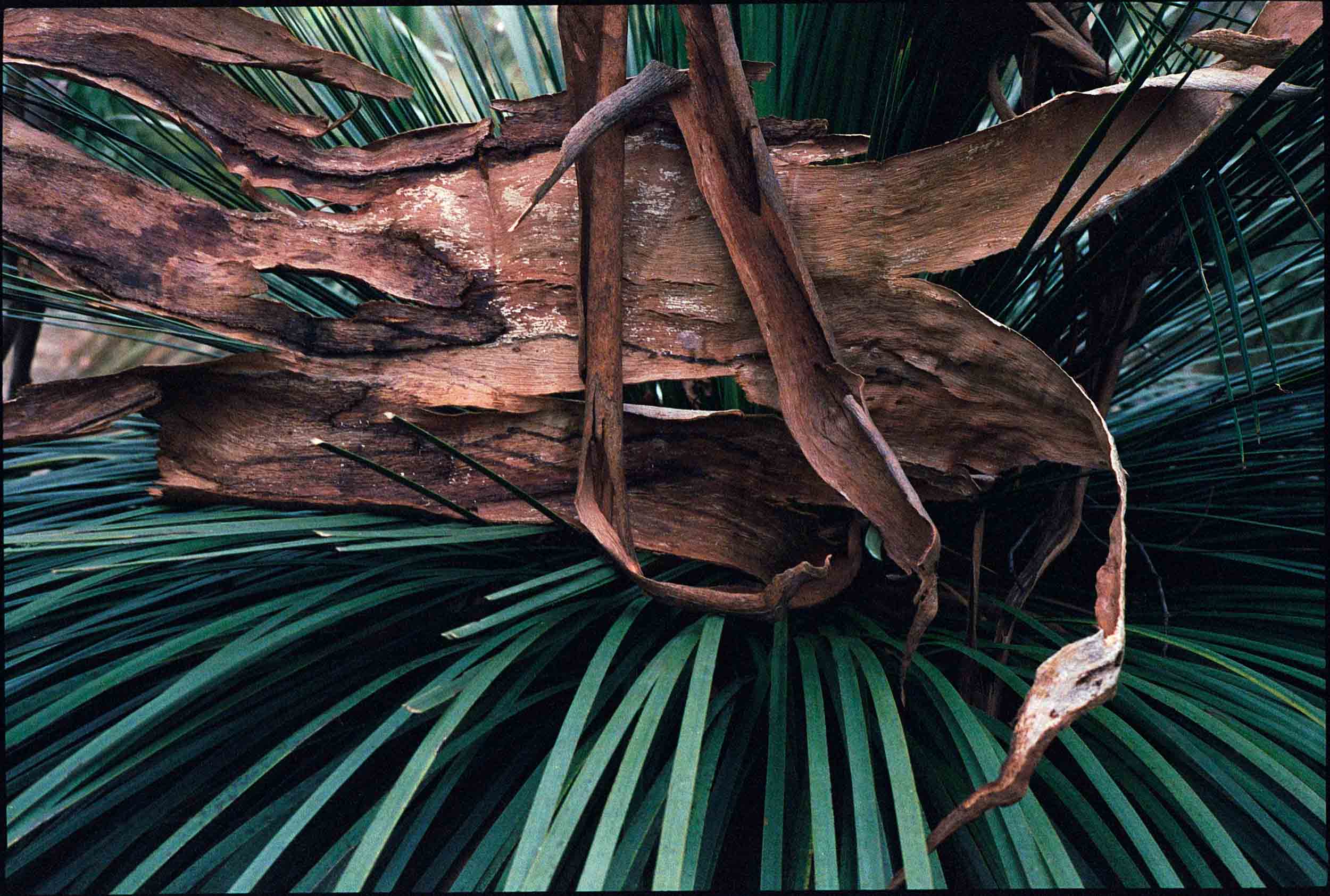
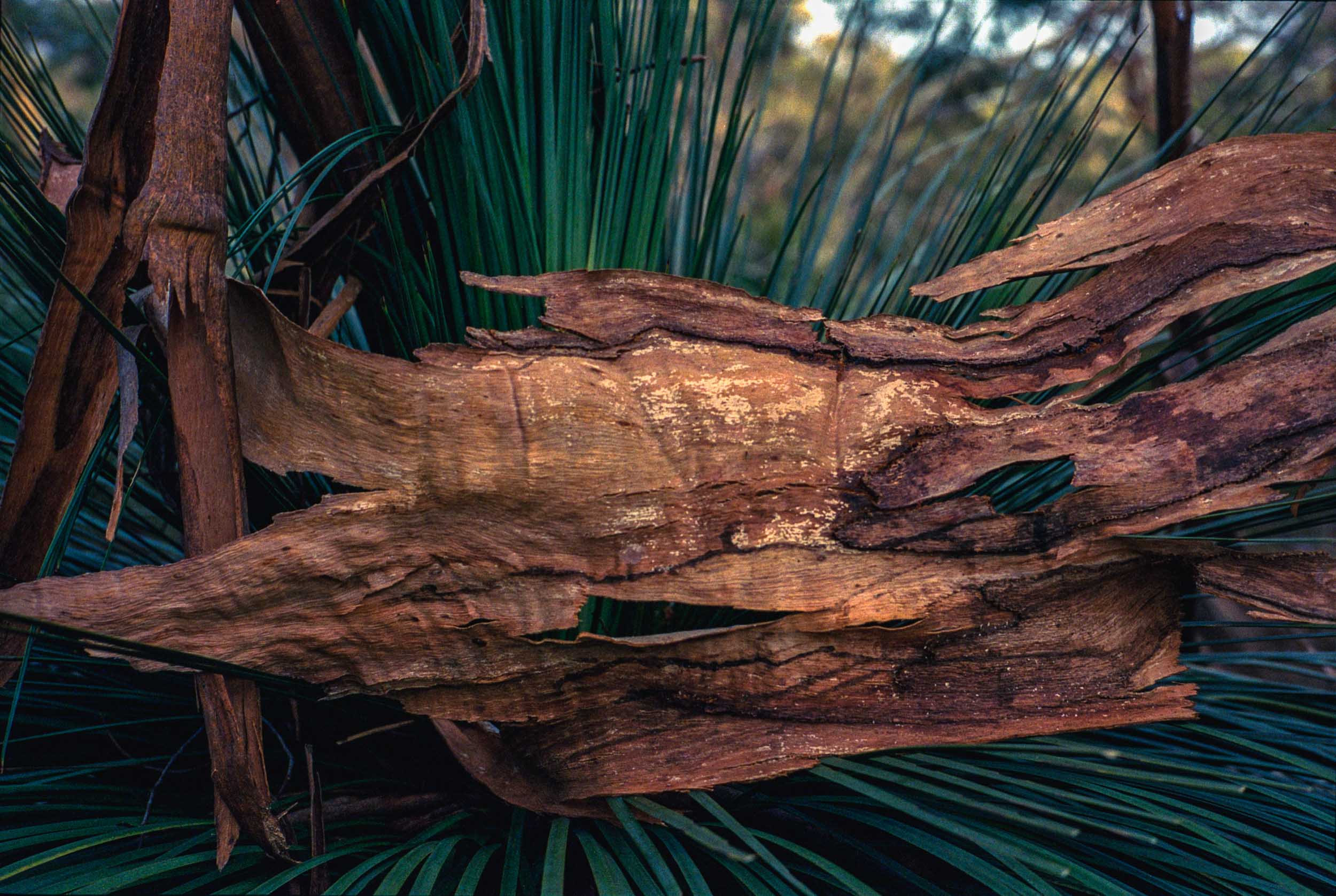
It is a low key walking art series, which explores the ephemera of the mundane bark peeling off the trunks and branches of the pink gums; or the piles of bark lying on the ground. The transience of the bark, its decay and disintegration (ie., perishability) is one of the more recognisable aspects of the flux, or the constant change in the Waitpinga bushland, apart from the broken branches and the occasional fallen tree from the high coastal winds. This damaged Waitpinga bushland is just hanging on.
This modest, walking art project in Ngarrindjeri country is contrary, or offside to, the currently fashionable photographic approach to make hero images that celebrate the photographer’s subjectivity (ie. , feelings, vision or imagination) that is premised on the subject object duality.
The background to the series can be found here on the modest Leica poetics blog, which highlights the photography emerging from drifting –from becoming lost in the bushland, being responsive to chance and to circumstance, and privileging the reactivity of the walk itself. To drift is to pay attention to different cues in a non-human nature (such as rhizomes, assemblages, otherness, poesis ).
